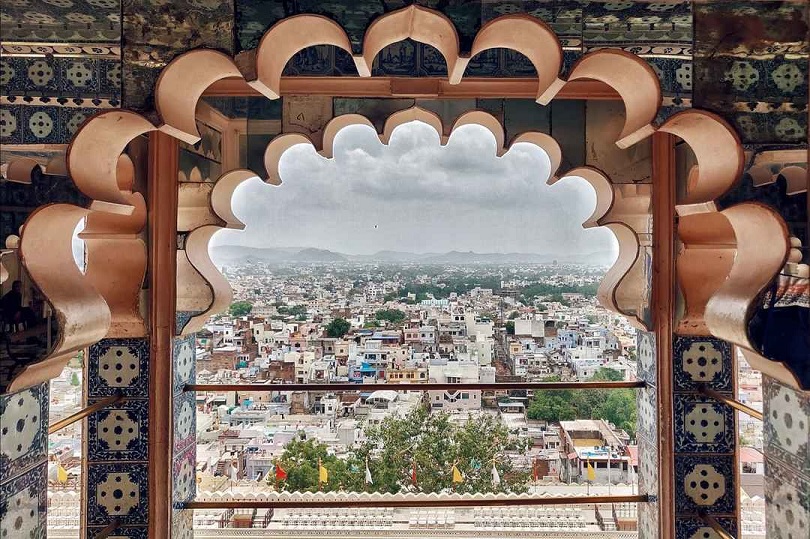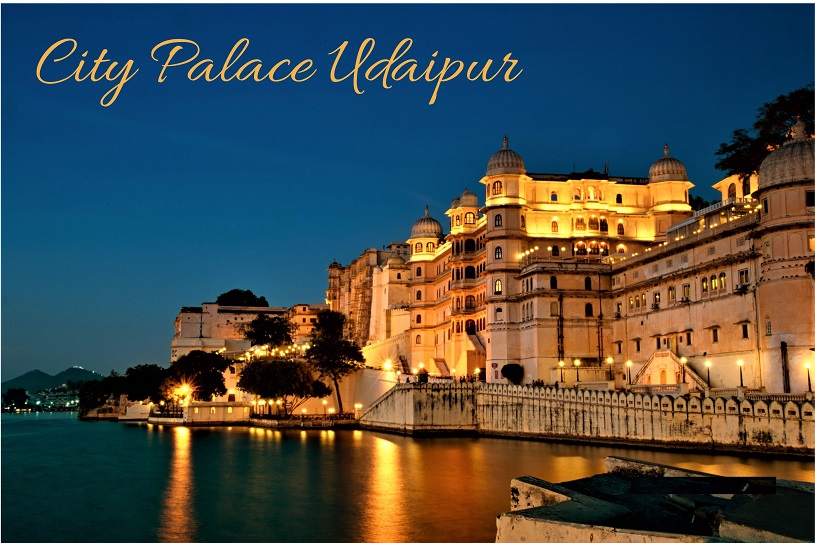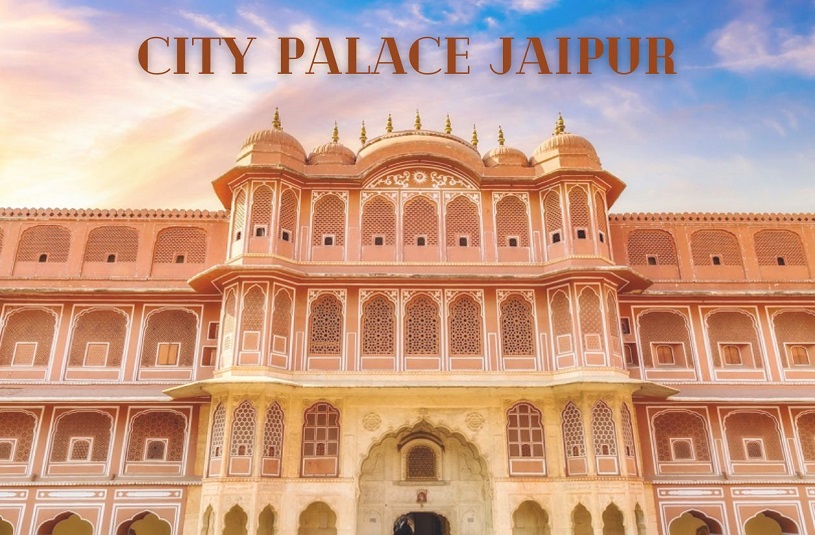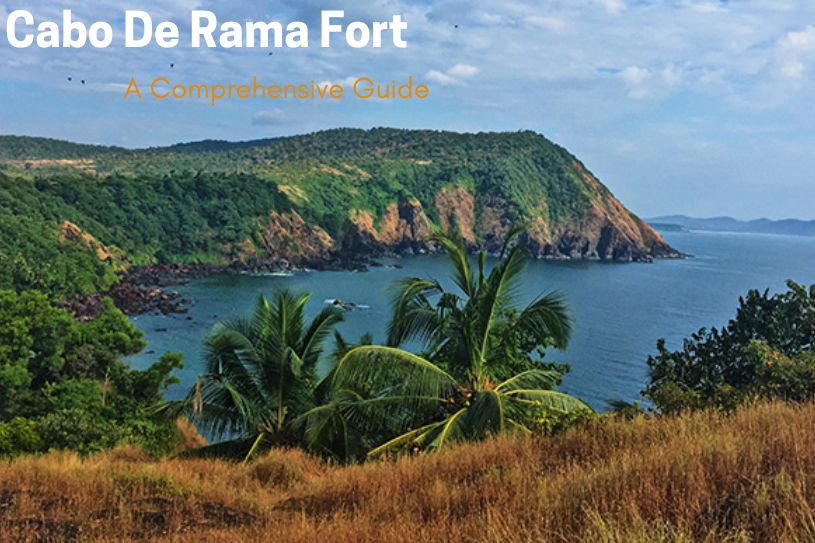Udaipur, popularly called ‘The City of Lakes’ and the ‘Venice of East’, is one of India’s most beautiful and majestic cities. Nestled amidst the Aravallis, Udaipur has a vast network of water bodies and is home to several magnificent monuments. The city’s markets also make for some of the most vibrant and bustling tourist spots to explore. Since Udaipur is located in the desert state of Rajasthan, the temperatures here tend to soar extremely high during summers. Therefore, September and March are the best times to visit Udaipur.
City Palace Udaipur is one of the most iconic attractions in Udaipur. Considered the largest palace complex in Rajasthan, City Palace Udaipur is built on the banks of Lake Pichola and was the main seat of power for the Maharanas. Maharana Uday Singh built the palace in 1559. His successors expanded the castle further by adding numerous structures to it. Made out of granite and marble, City Palace today is a culmination of numerous courtyards, pavilions, Mahals, terraces, rooms, hanging gardens, museums and spaces. Due to its regality, City Palace Udaipur has appeared in several movies, such as ‘Octopussy’ and ‘Ram Leela’.
- City Palace Udaipur Ticket Price: Rs. 300 for Adults, Rs. 100 for Children and Rs. 100 for Students
- City Palace Udaipur Timings: 9:30 AM to 5:30 PM
- City Palace Udaipur Online Ticket: https://ticket.citypalacemuseum.org/book-ticket
City Palace Udaipur: History

The construction of City Palace Udaipur began when Maharana Uday Singh II inherited the Mewar kingdom and moved his capital from Chittor to the banks of Lake Pichola due to a threat from Mughal rulers. The first structure of the palace, called ‘Rai Angan’, was established by the Maharana on the advice of the hermit and further construction of the complex was completed in 1559. Over the next 400 years, several additions, including building 11 small separate palaces and restoration projects, were made to the palace. The Mughals briefly took over Udaipur after Maharana Pratap’s defeat but returned it to his son after Akbar’s death. The Marathas’ offences led Maharana Bhim Singh to sign a treaty with the British, who controlled the palace until India’s independence in 1947. The Mewar Kingdom was later merged with democratic India in 1949.
Aslo Read: Famous Fort in Udaipur
City Palace: Architecture

City Palace Udaipur is magnificently built by combining the beauty of Rajput, European, and medieval architectural styles with a few Chinese influences. Even though the palace is on the hill next to Lake Pichola, you won’t feel like you are treading on uneven land once inside. The outer edifice is striking, with a height of 244m and a width of 30.4m and the entire complex is built in a homogeneous pattern. Tall towers, intricate balconies and cupolas further enhance the outer structure of the palace building.
The complex features an elephant gate, Hati Pol, and a beautiful Jagdish temple at the entrance. The Bari Pol, or big gate, leads to a courtyard and then to the Tripoli or triple gate. The City Palace contains luxurious apartments with panoramic city views. The Raj Angan, or royal courtyard, is the oldest section of City Palace Udaipur and now houses museums. The complex has 11 smaller palaces, most of which have been converted into galleries. The highest point is the Amar Vilas, with hanging gardens, fountains, towers, and terraces.
The palace’s interiors are equally striking and feature marble work, detailed mirror work, wall paintings, murals, inlay work, silver work and coloured glass. The palace inside also has several long labyrinth-style corridors designed to avoid surprise attacks from enemies.
7 Attractions City Palace Udaipur
1. Amar Vilas
Built on the highest level of the palace, Amar Vilas features a stunning hanging garden decorated with a square marble tub, fountains, towers and terraces. The area served as a leisure spot for the royals.
2. Badi Mahal
A structure built on a natural rock formation almost 27 m high, Badi Mahal is also known as the Garden Palace and has a swimming pool used during Holi celebrations. Paintings from the 18th and 19th centuries and wall art depicting Jag Mandir and Vishnu of Jagdish Temple are housed in a hall in Badi Mahal.
3. Gateways
The palace has multiple entrances, including the Bari Pol on the left, Tripolia in the centre, and Hathi Pol on the right. The main entrance is Bara Pol leading to the first courtyard. It’s where the Maharanas were weighed with gold and silver, and jewels were given to the needy. Toran Pol, with its marble arches, is also located here.
4. Sheesh Mahal
An integral part of the Queen’s Palace, Sheesh Palace is made entirely of mirrors and has a beautiful design that can be viewed from the outside.
5. Manak Mahal
A hall intended for formal audiences with the Mewar rulers, Manak Mahal features a raised niche entirely adorned with mirrors on the interior. One can observe sun-face emblems and other decorative motifs in this space. The Surya Chopar, situated on the lower level, also displays the most sizable emblems on its wall as part of its reception area.
6. Laxmi Vilas Chowk
This section is entirely dedicated to Mewar art.
7. Mor Chowk
This section is an essential component of the innermost chambers of the palace and features a meticulous depiction of three peacocks representing the seasons of summer, winter, and monsoon. These peacocks have been masterfully crafted using 5,000 pieces of glass, glimmering in captivating shades of green, gold, and blue. A projecting balcony is framed on the upper level by colourful glass inserts. Near this chamber lies the Kanch-ki-Burj, which boasts an assortment of mirror mosaics embellishing its walls.
As you get ready to explore the beauty of City Palace Udaipur, book a stay with us at The LaLiT Laxmi Vilas Palace Udaipur. As one of the best hotels in Udaipur, your stay with us is bound to be regal and memorable.


